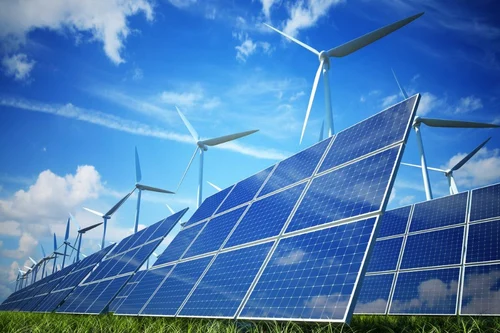By 2023, the Middle East tripled its solar energy capacity, reaching 9.3 gigawatts (GW)—a dramatic rise from just 3.4 GW in 2020, according to the latest OPEX report by the Energy Industries Council (EIC). The region also more than doubled its onshore wind capacity from 0.9 GW to 1.97 GW, driven by strategic clean energy policies and landmark projects.
This growth—led by energy giants like EDF Renewables and Masdar—highlights how resource-rich countries can leverage their natural endowments not only for fossil fuel exports but for clean energy leadership. For Africa, particularly countries across North and Sub-Saharan Africa eyeing similar transitions, the Middle East’s shift presents both a blueprint and a competitive benchmark.
Flagship Projects and Strategic Vision
Key projects like the Rashid bin Mohamed Al-Maktoum Solar Park (Phase 5) and the UAE Wind Programme were brought online in 2023. These additions reflect the Middle East’s growing focus on energy diversification, despite still being anchored in oil and gas.
Ambitious national plans—such as Saudi Arabia’s National Transformation Plan and Oman’s Wind 2025—are propelling further renewable expansion. In addition, the Masdar City Green Hydrogen Demonstration Project and new decarbonized maritime fuel initiatives signal a shift beyond just power generation, toward low-carbon industrial development.
Carbon Capture, Hydrogen, and a Dual Energy Future
The Middle East is also investing heavily in carbon capture and hydrogen technologies. Saudi Arabia inaugurated its second carbon capture facility in 2023 and plans to launch four more by 2024. Simultaneously, national hydrogen strategies are being rolled out in both Saudi Arabia and Oman.
This dual energy strategy—scaling up renewables while maintaining oil and gas exports—is also seen in the continued commissioning of new oil fields and infrastructure, even as older hydropower and thermal plants are retired due to mounting costs.
What This Means for Africa
For African nations—from Egypt and Morocco to South Africa and Kenya—this rapid energy diversification presents both inspiration and competition. Many African countries already possess world-class solar and wind resources, yet struggle with policy delays, financing hurdles, and grid infrastructure gaps.
The Middle East’s momentum demonstrates the value of clear national strategies, state-backed investment vehicles, and partnerships with global renewable developers. Companies like Masdar, for example, are already expanding into Africa—recently signing clean energy MOUs in Angola and Ethiopia.
As Africa navigates its own energy transition—amid rising demand, climate risks, and industrialization goals—the Middle East’s playbook offers valuable lessons in scale, speed, and integrated energy planning.


